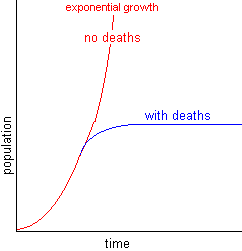There are many possible experiments you could try. Perhaps the
most obvious is a series of experiments in which you cut off half
a plant's leaves or a mouse's tail and see if the offspring acquire
that characteristic.
This has been done!
One scientist cut the tails off of mice for many generations but
he never found tailless mice among the offspring. And their tails
were no shorter than expected either.
Coming up with a series of observations that would disprove Inheritance
of Acquired Characteristics may have been more difficult for you,
however, there are many examples among humans. We, as a species,
are fascinated with various cosmetic and surgical procedures to
identify us as members of our local peer group. Some people traditionally
puncture and pierce their bodies in order to be clearly identified
as a member of the tribe or as a sign of (cultural) beauty. Some
religions also practise body alterations. Baby boys born as Jews
are traditionally circumcised. (Their foreskin is removed.) These
traditions have been going on for many generations yet no African
tribe has evolved premade holes in their bodies and no Jewish
family gives birth to boys with missing foreskin. Pierced ears
and circumcision are acquired but never inherited characteristics.
These examples disprove the Inheritance of Acquired Characteristics.
Our third and final hypothesis is the one generally accepted as
scientific, because it is falsifiable.
It is accepted as "true"
because it has yet to be disproven.
Descent With Modification (also called Evolution by
Natural Selection or simply Natural Selection) was described by Charles Darwin in his
book Origin of Species published in 1859. This theory
of evolution was simultaneously developed by another great scientist
and naturalist, Alfred Wallace, but Darwin and his supporters
presented the idea better. Indeed, this theory is so well accepted
as Darwin's that Descent With Modification is often called "Darwinian
Evolution".
So, what did Darwin say?
Darwin's theory is based upon two important observations of nature.
- Organisms produce far more offspring than can possibly be
supported by the ecology (island, river, planet, etc.).
- There is a great deal of variation among individual organisms.
So Darwinian evolution is based upon populations and variations.
Let's take a closer look at these two factors.
First populations.
A female cod can (and will) lay thousands of eggs in a single
breeding season. If all her offspring survived and her daughters
reproduced as successfully as she did, and so on and so on, the
oceans would be spilling over with cod in just a few years.
This population explosion would occur with any species if the
female created more than a "replacement pair", to replace
herself and her mate once they died.
All species produce more offspring than simply the replacements
the species need. That means all species lose some individual
offspring, but enough survive to keep the species going. (Otherwise
they go extinct.)
|
This graphs show two types of population growth.
If there are no deaths the population grows exponentially
and out of control. That is illustrated by the red line.
On the other hand, if deaths occur the population settles to a
constant level. That's the blue line.
Populations often start to grow exponentially but sooner or later
deaths start to take their toll and the population settles at
some level.
|  |
A female human is capable of birthing (at least) a dozen children
in her lifetime and a few centuries ago it was not uncommon for
a woman to have as many as a dozen births before she died.
Why don't women reproduce like that nowadays?
This work was created by Dr Jamie Love  and
and  licensed under a Creative Commons Attribution-ShareAlike 4.0 International License.
licensed under a Creative Commons Attribution-ShareAlike 4.0 International License.
If you like, you can return to the Home Page.

 and
and  licensed under a Creative Commons Attribution-ShareAlike 4.0 International License.
licensed under a Creative Commons Attribution-ShareAlike 4.0 International License.